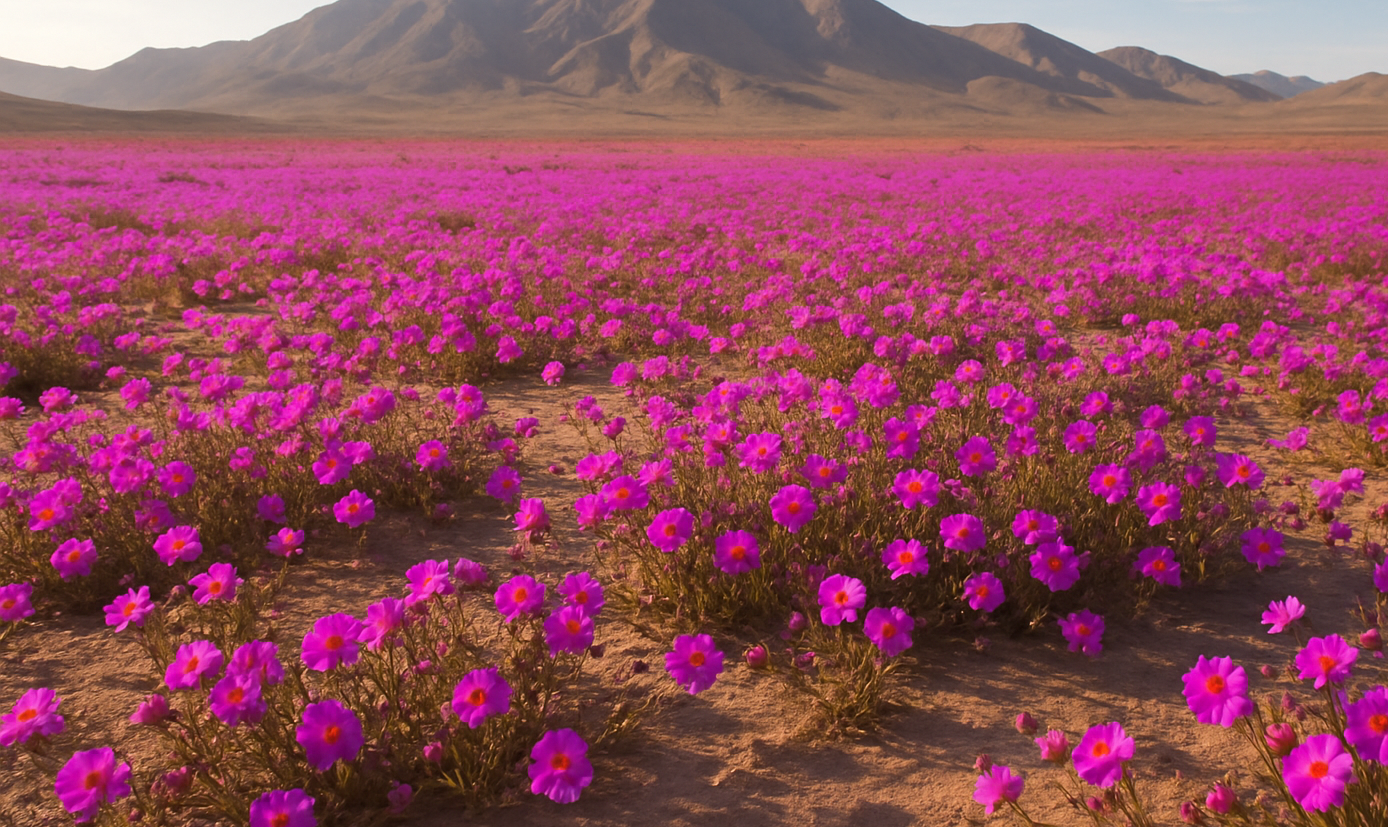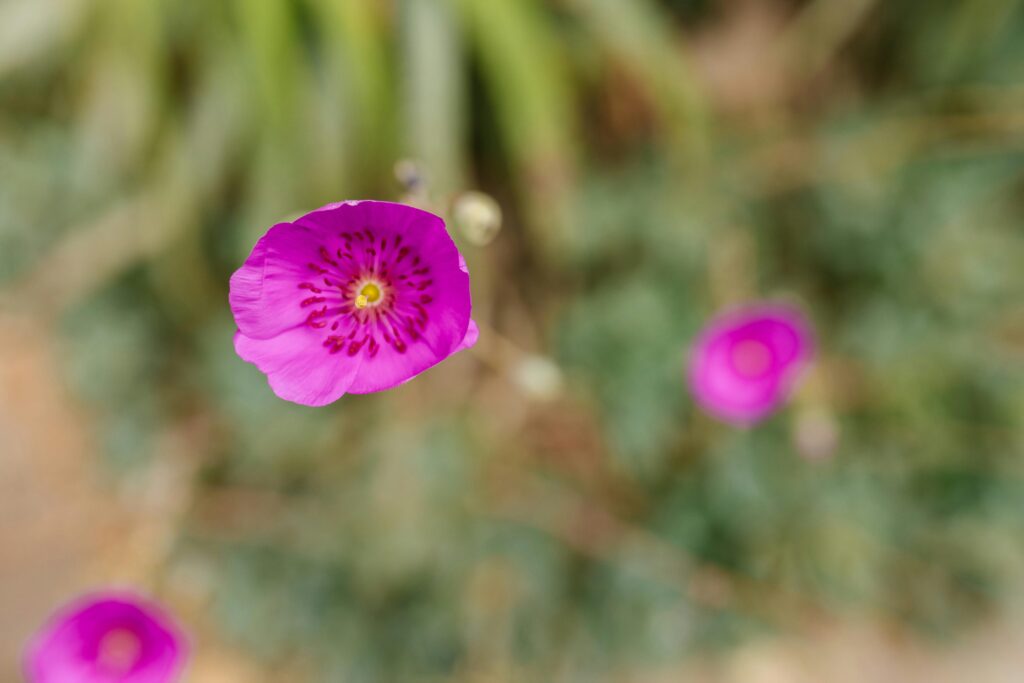
The Atacama Desert in northern Chile is one of the most inhospitable places on Earth. Some regions go decades without measurable rainfall, and vast areas are so dry that no plants or animals can survive. Yet every few years, when climatic conditions align, this barren landscape transforms into a mosaic of colour and life — and right now, that transformation is underway.
This rare desert bloom occurs when El Niño, a periodic Pacific climate event, brings unusually high rainfall to the region. In a desert that typically receives just 2 millimetres of rain per year, certain highland zones recorded up to 60 millimetres in 2025. The sudden availability of water awakens long-dormant seeds, reactivating entire ecosystems that have adapted to survive long periods of dormancy.
During a bloom, roots stabilise the soil, microbial activity restarts, and photosynthetic plants begin releasing water vapour through evapotranspiration. This process transfers water from soil and vegetation back into the atmosphere, cooling the surrounding air and increasing local humidity. In some cases, this rising moisture contributes to cloud formation directly above vegetated areas, a visible indicator of how ecosystems influence climate dynamics.
Over the past 40 years, scientists have documented around 15 major bloom events, each lasting only a few weeks between September and November. More than 200 plant species have been recorded across these events, though the exact number varies depending on rainfall and temperature.

One of the most studied species is Cistanthe longiscapa, locally known as pata de guanaco. It can switch between two forms of photosynthesis: the common C3 pathway and the CAM (Crassulacean Acid Metabolism) pathway used by desert succulents. This flexibility allows it to conserve water under heat and salinity stress. Researchers are sequencing the genome of Cistanthe longiscapa to identify drought-resilient traits, aiming to improve crop tolerance in a warming world.
“With climate change, droughts are becoming a serious problem for agriculture,” explains Ariel Orellana, director of the university’s Plant Biotechnology Center. “We need plants capable of tolerating that drought.”
Chile’s agricultural regions already face significant water scarcity. Projections place Chile among the world’s most water-stressed countries by 2050, with the Central Valley facing severe droughts that threaten water availability across the region.
From Desert Resilience to Urban Regeneration
The Atacama’s brief flowering season offers a natural demonstration of how soil, water, and vegetation interact to regulate climate. Once moisture enters the soil, life re-establishes rapidly, triggering a cycle of water retention, plant growth, and cooling.
This is the same principle applied in Impact One’s urban ecosystem design. By restoring soil health, water infiltration, and vegetated surfaces in cities, it is possible to replicate these natural feedback loops that moderate temperature and increase resilience to heat and drought.
- Evapotranspiration: the combined release of water vapour from soil (evaporation) and plants (transpiration). This process cools air temperatures, increases humidity, and helps manage stormwater by cycling it back into the atmosphere.
- Healthy soil: acts as a natural sponge. Each 1 percent increase in organic matter can store up to 20 000 litres of water per hectare, supporting plant growth and stabilising the local water cycle.
- Vegetated cover: enhances cloud formation and contributes to microclimate balance, showing that green systems are active climate infrastructure, not decoration.
A Living Model for Climate Adaptation
The desert bloom is temporary, but its message is lasting: ecosystems, even in the harshest conditions, can regenerate when their water and biological cycles are reconnected. The same processes that turn dust into life in Chile can help cities become active parts of the climate system by absorbing heat, storing water, and sustaining biodiversity year-round.
Nature provides the evidence. We apply it to how cities grow.
Desert Bloom: Lessons for Resilient Ecosystems
The Atacama Desert, one of the driest places on Earth, is undergoing a rare transformation as an El Niño event brings exceptional rainfall, triggering the desert bloom. This short-lived phenomenon reawakens dormant ecosystems and offers a powerful lesson in resilience. By studying species like Cistanthe longiscapa, researchers are uncovering drought-resistant traits that can improve crop tolerance in a warming world.